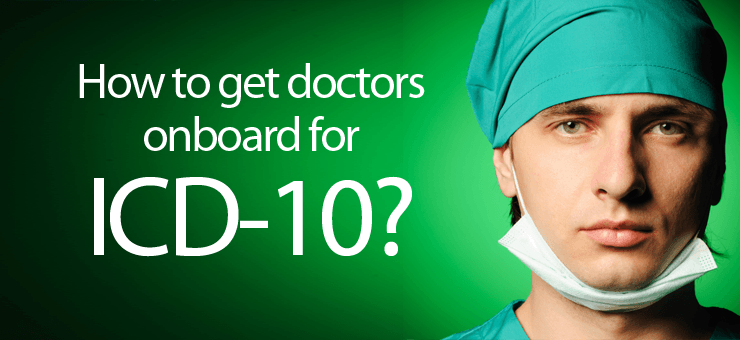Most of the physicians, healthcare providers and hospitals are gearing up for the monumental change in medical codes which takes effect on October 1, 2014. The classification of disease codes collectively referred to as ICD-10, comprise of almost 70,000 codes. This is an increase of more than 500 percent from the current 13,000 ICD-9 codes, and opens up a whole new world of medical coding.
So how are the practitioners and providers getting ready for this transition? Most of them are scared to learn all the codes by heart, and fear that it will be quite a challenge. Some physicians are of the opinion that they might not be able to comply with the regulatory authorities even by December 2014.
Let’s look at some ideas as to how the physicians can get themselves ready for ICD-10.
Establish overview of implementation training
Properly chart the training, implementation and communication plan for ICD-10. This is absolutely vital for a successful transition to the new system. Some of the larger practices are already running dual coding, while on the other end of the spectrum, there are practices that haven’t done anything to start the transition.
Take small bites
Memorizing the entire ICD-10 system is literally impossible for anyone. Instead, physicians must understand that they only need to learn those codes which are relevant to them. Similarly, medical coders should focus on learning the codes that apply to them, and not the ones related to the physicians.
Find the best training method for your practice
EHR vendors need to understand that every practice has a different workflow, therefore what works for one practice may not work for another. If a 60-minute training session does not work for employees at a certain practice, try breaking down the training in multiple batches of 15 minutes each. The fact of the matter is, physicians are extremely busy and so is their support staff, and training must be designed around their workflow.
Get familiar with PCS terminology
The main issue for physicians in implementing the ICD-10 seems to be, learning the Procedure Coding System. They need to be properly trained for PCS and must start the learning process as soon as possible. It is not going to be as simple as adding two more digits to the system; it is about understanding the whole structure from scratch.
Don’t just rely on GEMs
The General Equivalence Mappings (GEMs), once created to transliterate ICD-9 codes into ICD-10 and ICD-10 PCS, should not be seen as a literal crosswalk to the new system. Most of the diseases have multiple codes in ICD-10 and need to be learned by heart, instead of just relying on the GEMs. A disease which is classified in only one code in ICD-9 might be classified in up to 20 different codes in ICD-10.
Educate the office staff
One thing the practices must remember is that at some point, the office staff will also need to use ICD-10. Therefore, it must be ensured that they receive training and support instead of letting them rely on their cheat sheets.
These are some of the techniques practices and providers can use to ensure that they are ready for ICD-10 when it arrives. Some of the practices are already using dual coding to get ready, and it won’t be long before everyone will have to get used to it.

Join the Discussion!